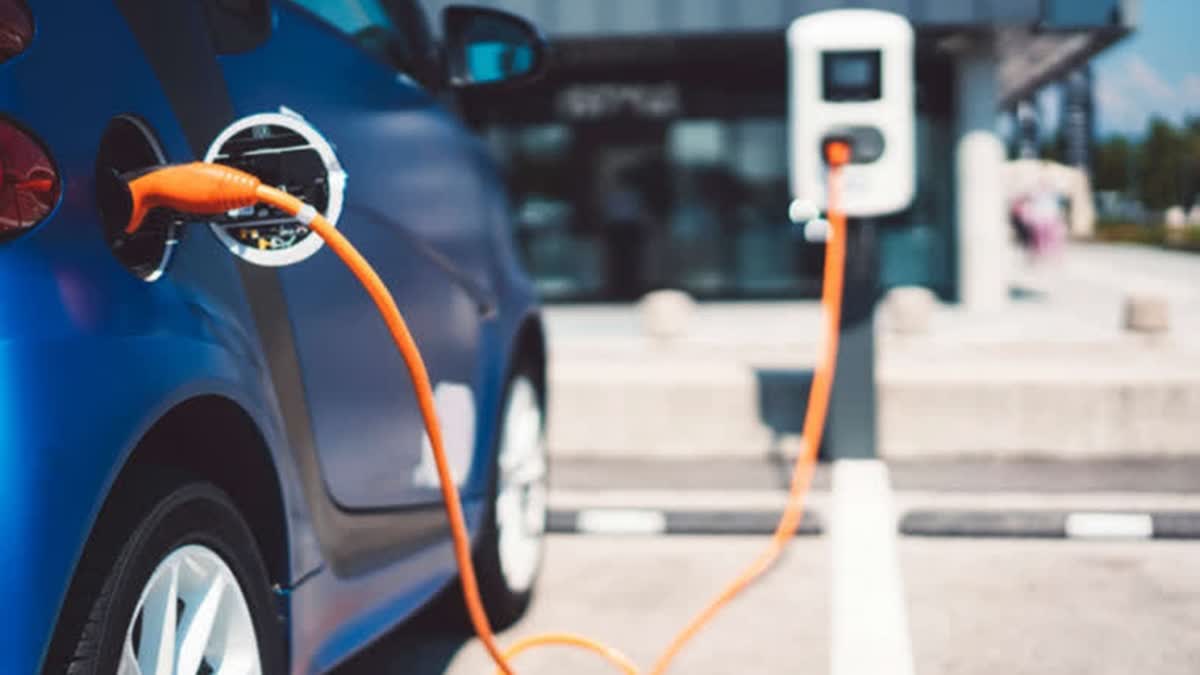Hyderabad: India's road transport system heavily relies on petrol and diesel, requiring a significant expenditure of foreign exchange currency for crude oil imports. This over-reliance on petroleum not only drains the country's resources but also contributes to worsening air pollution. In the face of these pressing challenges, electrified highways are emerging as a promising and sustainable solution.
While electric vehicles present certain challenges, such as high costs, limited range, sparse charging infrastructure, and battery-related concerns, electrified highways offer a way forward. In this editorial, we will delve into the concept of electrified highways, their benefits, and how they could revolutionize India's transportation landscape.
Electrified Highways: A Solution to India's Transport Challenges
The concept of electrified highways offers an innovative approach to providing a continuous source of electricity for electric vehicles (EVs). These highways aim to overcome the limitations of conventional EVs and address concerns regarding battery life, charging infrastructure, and energy security.
Different Approaches to Electrified Highways
Electrified highways employ various methods to supply electricity to vehicles. One approach involves establishing power transmission systems at a certain height above the ground. Alternatively, electricity transmission lines can be laid on the road surface, similar to railway tracks, allowing direct coupling with the vehicle's motor.
Another innovative method involves an underground power transmission system that uses induction instead of direct connections. Specialized receivers on vehicles make contact with wires embedded in the road, ensuring a seamless supply of electricity. These systems offer significant technical and administrative convenience, making them best suited for larger vehicles like trucks, buses, and public transportation.
The choice between elevated systems and railway-like systems largely depends on the type of vehicles and volume of traffic. Elevated systems cost approximately 9.30 crore rupees per kilometer, while railway-like systems come in at 5.84 crore rupees. The underground power transmission setup is the most expensive, at 18.33 crore rupees per kilometer. However, it's important to note that these electrical systems boast a lifespan of over two decades.
Versatility for All Vehicle Types
Electrified highways using power lines embedded in the ground, like railway tracks, can accommodate all types of vehicles. On the other hand, the underground power system eliminates the need for surface poles and cables but has limitations in bulk electricity delivery, making it less suitable for heavier vehicles.
Energy Security and Sustainable Materials
In India, the scarcity of raw minerals required for battery manufacturing, such as lithium, nickel, and manganese, poses a challenge. This dependency on foreign nations for battery raw materials, akin to oil, jeopardizes energy security. Electrified highways could reduce this dependency as they draw power directly from the infrastructure, obviating the need for energy storage. Moreover, introducing solar panels along the road can offset power losses and enhance sustainability.
Infrastructure and Maintenance Costs
While electrified highways entail significant construction and maintenance costs, a tailored strategy should align with the vehicle type and volume, promoting a sustainable transition towards cleaner transportation systems. Integrating electric vehicles into public roadways would require dedicated lanes on both sides, a feasibility currently limited to six-lane national highways. Distribution companies must establish substations along the route to ensure seamless power supply, and expanding electricity production is essential to meet growing demand.
A Grand Strategy: National Highways for Electric Vehicles
The Union National Highways Department has initiated an innovative pilot project in Nagpur, marking a significant step in their ambitious "National Highways for Electric Vehicles" (NHEV) initiative. This project aims to facilitate the widespread adoption of electric vehicles and includes plans to electrify the vital route connecting Delhi to Mumbai. The long-term vision of the NHEV initiative encompasses the construction of 5,000 kilometers of electrified national roadways, a monumental endeavor that relies on collaborative efforts between the public and private sectors.
Crucially, the cost recovery and operational sustainability of these electrified highways will be achieved through toll collection, ensuring that private corporations can recoup their investments. What sets these highways apart is their ability to virtually eliminate concerns about EV battery depletion. Electric vehicles traversing these roads draw power directly from the infrastructure, obviating the need for charging, storage, or discharging processes. Consequently, this approach minimizes energy losses during conversion by up to fifty percent.
The Multifaceted Benefits of Electrified Highways
